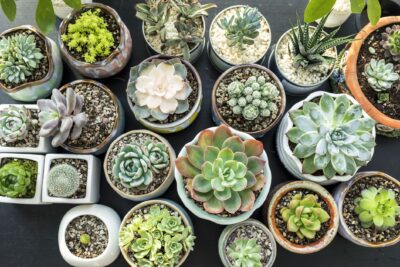
Comparing Sizes: A Guide to the Different Sizes of Succulents

Succulents have become increasingly popular in recent years, with their unique and attractive appearance making them a favorite among plant enthusiasts. One of the factors that make succulents so appealing is their wide variety of sizes. From tiny, delicate plants that fit in the palm of your hand to towering giants that can reach several feet in height, succulents come in all shapes and sizes.
We will explore the different sizes of succulents and how they can be incorporated into your indoor or outdoor space. We will discuss the various categories of succulent sizes, including small, medium, large, and extra-large, and provide examples of popular succulents within each category. Additionally, we will offer tips on caring for succulents of different sizes, including proper watering and lighting requirements. Whether you are a seasoned succulent collector or just starting out, this guide will help you navigate the world of succulent sizes and find the perfect plants for your home or garden.
- Understanding the different sizes of succulents can help you choose the right plant for your space
- Small succulents are perfect for terrariums or small containers
- Medium-sized succulents make great additions to gardens or as standalone plants on shelves or tables
- Large succulents are ideal for adding a statement piece to your indoor or outdoor space
- Miniature succulents are adorable and can be displayed in tiny pots or fairy gardens
- Hanging succulents are a unique way to add greenery to your space, especially in hanging baskets or macrame planters
- Consider the size of your space and the care requirements when selecting the right size of succulent
- Mix and match different sizes of succulents to create an interesting and dynamic display
- Don't forget to provide proper care, including sunlight, water, and well-draining soil, for your succulents regardless of their size
- Enjoy the beauty and versatility of succulents in various sizes and arrangements
- Frequently Asked Questions
Understanding the different sizes of succulents can help you choose the right plant for your space
When it comes to choosing the perfect succulent for your home or garden, size matters. Understanding the different sizes of succulents can help you find the right plant that will fit perfectly in your space and meet your needs.
Small-Sized Succulents
If you have limited space or want to create a charming mini succulent garden, small-sized succulents are the way to go. These petite plants are perfect for small pots, terrariums, or even as part of a larger arrangement. Despite their small size, they can still make a big impact with their unique shapes and vibrant colors. Some popular small-sized succulents include Echeveria 'Lola', Haworthia cooperi, and Sedum 'Little Missy'.
Medium-Sized Succulents
Medium-sized succulents strike a perfect balance between small-sized succulents and larger varieties. They are versatile and can be used as standalone plants or in groupings to create visually appealing displays. These succulents are ideal for medium-sized pots or as focal points in a garden bed. Examples of medium-sized succulents include Aloe vera, Agave parryi, and Crassula ovata (Jade Plant).
Large-Sized Succulents
If you have ample space and want to make a bold statement, large-sized succulents are the way to go. These majestic plants can become the centerpiece of any garden or indoor space. Due to their size, they require more room to grow and thrive. Large-sized succulents, such as Agave americana, Aeonium 'Zwartkop', and Opuntia ficus-indica, can create an impressive focal point and add a touch of drama to any landscape.
Considerations When Choosing Succulent Sizes
When deciding on the size of your succulents, there are a few factors to consider:
 Can Succulents Imitate the Appearance of a Human Brain?
Can Succulents Imitate the Appearance of a Human Brain?- Space: Consider the available space you have for your succulents. Small-sized succulents are perfect for tight spaces, while large-sized succulents require more room to grow.
- Light: Different succulent sizes have varying light requirements. Smaller succulents may tolerate lower light conditions, while larger succulents often need direct sunlight to thrive.
- Maintenance: Keep in mind that larger succulents may require more maintenance, such as regular pruning and repotting, compared to their smaller counterparts.
By understanding the different sizes of succulents and considering your space, lighting, and maintenance preferences, you can choose the perfect succulent that will thrive and bring beauty to your home or garden.
Small succulents are perfect for terrariums or small containers
When it comes to succulents, size does matter. Small succulents are perfect for those who want to create a mini garden in a terrarium or have limited space for larger containers. These pint-sized plants not only add a touch of greenery to your living space but also require minimal care and attention.
One popular small succulent is the Echeveria 'Lola.' With its rosette-shaped leaves and stunning purple hues, it is a favorite among succulent enthusiasts. Another option is the Haworthia fasciata, commonly known as the Zebra Plant, which features distinctive white stripes on its fleshy leaves.
Advantages of small succulents
- Low maintenance: Small succulents are known for their ability to thrive in various conditions, including low light and drought. They require minimal watering and can survive extended periods without attention.
- Versatility: Due to their compact size, small succulents can be placed in a variety of containers, such as terrariums, teacups, or even small pots. They can fit into any corner of your home or office, adding a touch of greenery to even the tiniest spaces.
- Easy propagation: Small succulents are relatively easy to propagate. You can propagate them from leaves or stem cuttings, allowing you to expand your collection without spending a fortune.
- Indoor and outdoor options: Whether you have a sunny window sill or a shaded patio, there is a small succulent that can thrive in your specific environment. This versatility makes them suitable for both indoor and outdoor gardening.
Choosing the right small succulent for your needs
When selecting a small succulent, consider factors such as the amount of light available, watering preferences, and the overall aesthetics you desire. Some succulents prefer bright indirect light, while others can tolerate lower light conditions. Additionally, some varieties require more frequent watering, while others prefer to dry out between waterings.
For a terrarium or enclosed container, opt for succulents that stay small and compact, such as Haworthia species or Sedum pachyphyllum. On the other hand, if you have a sunny windowsill, you may consider Crassula ovata 'Gollum,' which has tubular leaves and a unique appearance.
Remember to choose succulents that not only fit your space but also align with your personal preferences. With their wide range of colors, shapes, and textures, small succulents offer endless possibilities for creating your own miniature garden.
Medium-sized succulents make great additions to gardens or as standalone plants on shelves or tables
 Discover the Stunning Resemblance: A Lettuce-Like Succulent
Discover the Stunning Resemblance: A Lettuce-Like SucculentWhen it comes to succulents, the size of the plant can play a significant role in determining its placement and care requirements. Medium-sized succulents, in particular, are highly versatile and can be a wonderful addition to any garden or serve as eye-catching standalone plants on shelves or tables. Let's explore the various medium-sized succulents and their unique characteristics.
1. Echeveria 'Lola'
Echeveria 'Lola' is a stunning medium-sized succulent known for its rosette-shaped leaves. With its pale blue-green hue and delicate pink edges, 'Lola' adds a touch of elegance to any space. This succulent thrives in bright, indirect light and requires well-draining soil to prevent root rot.
2. Haworthia 'Zebra Plant'
The Haworthia 'Zebra Plant' is a mesmerizing medium-sized succulent that gets its name from the unique zebra-like stripes on its fleshy leaves. This plant is ideal for indoor cultivation as it prefers bright but indirect light. 'Zebra Plant' is relatively low-maintenance and is a popular choice for succulent enthusiasts.
3. Sedum 'Burrito'
Sedum 'Burrito', also known as the 'Burro's Tail,' is a trailing succulent with long, slender leaves that resemble a braided rope. This medium-sized succulent is perfect for hanging baskets or as a cascading plant on shelves. 'Burrito' thrives in bright, indirect light and requires well-draining soil to prevent overwatering.
4. Aloe variegata 'Tiger Aloe'
Aloe variegata, commonly known as 'Tiger Aloe,' is a medium-sized succulent with distinctive white speckles and stripes on its triangular leaves. This succulent is not only visually appealing but also has medicinal properties. 'Tiger Aloe' prefers bright light and well-draining soil, making it an excellent choice for both indoor and outdoor settings.
These are just a few examples of medium-sized succulents that can elevate the aesthetics of your garden or indoor space. Remember to provide them with the recommended lighting and soil conditions to ensure their optimal growth and beauty.
Whether you choose the delicate 'Lola,' the striped 'Zebra Plant,' the cascading 'Burrito,' or the unique 'Tiger Aloe,' incorporating medium-sized succulents into your plant collection will surely add a touch of charm and natural beauty.
 Exploring the Existence of Naturally Blue Succulents: Fact or Fiction?
Exploring the Existence of Naturally Blue Succulents: Fact or Fiction?Large succulents are ideal for adding a statement piece to your indoor or outdoor space
If you're looking to make a bold and eye-catching statement in your indoor or outdoor space, large succulents are the way to go. These impressive plants have a commanding presence and can instantly elevate the aesthetics of any area.
One popular choice for a large succulent is the Echeveria, which is known for its rosette-shaped leaves and stunning color variations. These plants can grow up to 8 inches in diameter, making them a striking focal point for any garden or room.
Another standout option is the Sansevieria, also known as the Snake Plant or Mother-in-Law's Tongue. These succulents can reach heights of up to 3 feet and have long, upright leaves with a distinctive pattern. They are not only visually appealing but also known for their air-purifying properties.
If you're looking for a succulent that adds a touch of elegance and drama, consider the Agave. With their architectural shapes and spiky leaves, these plants can grow quite large, some reaching heights of 6 feet or more. They are perfect for adding a striking focal point to a desert-themed garden or a minimalist indoor space.
A popular choice for indoor gardening is the Crassula ovata, commonly known as the Jade Plant or Money Tree. While it may not grow as tall as some other large succulents, its thick, glossy leaves and tree-like appearance make it a captivating addition to any room.
When it comes to caring for large succulents, it's important to provide them with enough space to grow and thrive. Make sure to select a pot or container that allows for proper drainage and enough room for the plant's roots. Large succulents also require ample sunlight, so place them in a bright spot near a window or in your garden where they can receive direct sunlight for a few hours each day.
Remember to water your large succulents sparingly, as overwatering can lead to root rot. Allow the soil to dry out completely between waterings and be sure to use a well-draining soil mix specifically formulated for succulents.
 Air Plants vs Succulents: Differences and Similarities
Air Plants vs Succulents: Differences and SimilaritiesWith their impressive size and unique characteristics, large succulents are sure to make a statement in any space. Whether you choose an Echeveria, Sansevieria, Agave, or Crassula ovata, these plants will add a touch of natural beauty and elegance to your indoor or outdoor area.
Miniature succulents are adorable and can be displayed in tiny pots or fairy gardens
Miniature succulents are perfect for those who want to add a touch of cuteness to their indoor or outdoor spaces. These petite plants are known for their compact size, making them ideal for displaying in tiny pots or even creating whimsical fairy gardens.
One of the advantages of miniature succulents is their versatility. Due to their small size, they can fit in almost any space, whether it's a windowsill, a small corner of a desk, or a terrarium. You can easily create your own miniature succulent garden by grouping several of these tiny plants together.
These adorable succulents come in various shapes and colors, adding visual interest to any display. Some popular varieties of miniature succulents include the Haworthia cooperi, Echeveria 'Lola', and Sedum pachyphyllum. Each of these plants has its own unique characteristics, making them an exciting addition to any succulent collection.
When it comes to care, miniature succulents are relatively low-maintenance. They require bright, indirect light and well-draining soil, just like their larger counterparts. However, their small size means they have less water storage capacity, so it's essential to water them sparingly and avoid overwatering.
Whether you're a seasoned succulent enthusiast or just starting your collection, miniature succulents offer a delightful way to explore the world of these fascinating plants. Their small size and charming appearance make them a popular choice among succulent lovers and collectors alike.
 Identifying and Recognizing Common Succulent Plants Guide
Identifying and Recognizing Common Succulent Plants GuideHanging succulents are a unique way to add greenery to your space, especially in hanging baskets or macrame planters
Hanging succulents are a great addition to any indoor or outdoor space. They not only add a touch of greenery but also create a unique visual appeal. Whether you're looking to enhance your living room, patio, or balcony, hanging succulents can be the perfect solution.
One of the key advantages of hanging succulents is their ability to thrive in small spaces. With their compact size and low maintenance requirements, they are an ideal choice for those with limited space or busy schedules. Additionally, their trailing stems and cascading foliage add an interesting dimension to your plant collection.
When it comes to choosing hanging succulents, there are various sizes available. Let's explore some of the different sizes and their characteristics:
Small Hanging Succulents
Small hanging succulents are perfect for those who prefer a delicate and dainty look. These petite plants typically have a compact growth habit, with small rosettes or trailing stems. They are ideal for smaller hanging baskets or as accents in larger arrangements.
Some popular small hanging succulents include:
- String of Pearls (Senecio rowleyanus): Known for its unique bead-like foliage, this succulent trails beautifully and adds a touch of elegance to any space.
- String of Hearts (Ceropegia woodii): With its heart-shaped leaves and cascading vines, this succulent is a popular choice for hanging planters.
- Burro's Tail (Sedum morganianum): This succulent features long trailing stems adorned with plump, bead-like leaves. It adds a touch of whimsy to any hanging arrangement.
Medium Hanging Succulents
Medium hanging succulents strike a balance between size and visual impact. These plants offer more substantial foliage and growth, making them ideal for larger hanging baskets or as statement pieces in your plant collection.
 Are Mermaid Tail Succulents Real? A Care Guide for Enchanting Plants
Are Mermaid Tail Succulents Real? A Care Guide for Enchanting PlantsSome popular medium hanging succulents include:
- Fishbone Cactus (Epiphyllum anguliger): This succulent is known for its unique zigzag-shaped stems, resembling a fishbone. It adds a stunning architectural element to any hanging arrangement.
- Donkey's Tail (Sedum morganianum): Similar to the Burro's Tail, this succulent features long trailing stems adorned with plump leaves. It has a more substantial growth habit compared to its smaller counterpart.
- String of Bananas (Senecio radicans): This succulent showcases cascading stems with banana-shaped leaves. It brings a fun and playful vibe to your hanging plant collection.
Large Hanging Succulents
If you're looking to make a bold statement with your hanging succulents, consider opting for larger varieties. These plants are perfect for large hanging baskets or as focal points in your indoor or outdoor space.
Some popular large hanging succulents include:
- Trailing Jade (Senecio jacobsenii): With its thick, trailing stems and vibrant green leaves, this succulent creates a lush and dramatic effect when hanging.
- String of Dolphins (Senecio peregrinus): This succulent features unique leaf formations that resemble leaping dolphins. It adds a whimsical touch to any hanging arrangement.
- String of Raindrops (Senecio herreianus): Known for its spherical leaves that resemble water droplets, this succulent offers an eye-catching visual appeal when cascading from a hanging planter.
Whether you opt for small, medium, or large hanging succulents, one thing is for sure – they will add a touch of natural beauty and charm to your space. So go ahead, get creative with your hanging arrangements and enjoy the beauty of these unique plants.
Consider the size of your space and the care requirements when selecting the right size of succulent
When it comes to selecting the right size of succulent for your space, there are a few factors to consider. The size of your space will play a significant role in determining the size of succulent that is suitable for you. Additionally, it's important to take into account the care requirements of different sizes of succulents.
Small Succulents
If you have limited space or want to start a small indoor garden, small succulents are an excellent choice. These petite plants are perfect for windowsills, desktops, or any small area that needs a touch of greenery. Small succulents are low-maintenance and require minimal care, making them perfect for beginners.
 Expert Help Identifying Various Succulent Houseplants
Expert Help Identifying Various Succulent Houseplants- Popular small succulents: Haworthia, Echeveria 'Lola', Crassula ovata (Jade Plant)
- Care requirements: Well-draining soil, indirect sunlight, and infrequent watering
Medium-Sized Succulents
Medium-sized succulents are a great choice for those who want a slightly larger plant but still have limited space. These succulents can be placed on shelves, countertops, or as part of a succulent arrangement. They offer a wider variety of shapes and colors compared to small succulents, adding more visual interest to your space.
- Popular medium-sized succulents: Aloe vera, Kalanchoe luciae (Paddle Plant), Sedum morganianum (Burro's Tail)
- Care requirements: Well-draining soil, bright indirect sunlight, and moderate watering
Large Succulents
If you have ample space and want to make a statement, large succulents are the way to go. These plants can serve as focal points in your garden or as standalone pieces indoors. Large succulents come in various shapes and textures, adding drama and a tropical vibe to your space.
- Popular large succulents: Agave americana, Aeonium 'Zwartkop', Senecio rowleyanus (String of Pearls)
- Care requirements: Well-draining soil, bright sunlight, and regular watering
Remember, regardless of the size of your succulent, it's important to provide them with the right care to ensure their health and longevity. By considering the size of your space and the care requirements of different succulents, you can select the perfect size of succulent that fits your needs and adds beauty to your surroundings.
Mix and match different sizes of succulents to create an interesting and dynamic display
Succulents are a popular choice for both indoor and outdoor gardening due to their unique and captivating appearance. One of the key elements in creating a visually appealing succulent garden is to mix and match different sizes of succulents. This not only adds depth and dimension to your display but also creates a visually pleasing contrast.
Small Succulents
Small succulents are perfect for filling in the gaps and adding delicate details to your garden. They are often referred to as "filler" succulents due to their size and ability to fill empty spaces. Some popular small succulents include Echeveria 'Lola,' Crassula perforata, and Sedum adolphii 'Golden Glow.' These petite plants are great for creating intricate patterns or adding pops of color to your display.
Medium Succulents
Medium-sized succulents are the backbone of any succulent garden. They provide a sturdy base for your display and can be used as focal points or anchor plants. These succulents usually have more substantial rosettes or unique shapes, making them stand out. A few examples of medium succulents are Aloe vera, Haworthia fasciata, and Kalanchoe luciae 'Flapjacks.' Their size and structure add a sense of balance and prominence to your garden.
 Exploring the Tube-Shaped Leaves of Succulents: A Guide
Exploring the Tube-Shaped Leaves of Succulents: A GuideLarge Succulents
Large succulents are the statement pieces of any succulent garden. With their grand size and striking appearance, they demand attention and become the focal points of your display. These succulents often have architectural shapes and can serve as the centerpiece or anchor for your garden. Some popular large succulents include Agave americana, Yucca elephantipes, and Crassula ovata 'Gollum.' Incorporating large succulents brings drama and a sense of grandeur to your garden.
When arranging your succulents, it's important to consider the overall balance and visual flow. Mixing and matching different sizes of succulents allows you to create a visually dynamic display by playing with scale and proportion. By combining small, medium, and large succulents, you can create a garden that is visually captivating and showcases the diverse beauty of these plants.
- Experiment with different arrangements and placements to find what works best for your space.
- Consider the growth habits of each succulent to ensure they have enough room to thrive.
- Remember to provide adequate sunlight and drainage for your succulents.
Whether you have a small balcony garden or a sprawling backyard, incorporating succulents of different sizes will add interest and variety to your space. So go ahead, get creative, and design your own stunning succulent display!
Don't forget to provide proper care, including sunlight, water, and well-draining soil, for your succulents regardless of their size
When it comes to succulents, size matters. Not only do succulents come in various shapes and colors, but they also vary in size. Understanding the different sizes of succulents can help you choose the right ones for your space and ensure they thrive.
Small Succulents
Small succulents are perfect for those with limited space or for adding a touch of greenery to your desk or windowsill. These tiny plants usually grow up to 3 inches in height and width, making them ideal for small pots or terrariums. Despite their size, small succulents can still make a big impact with their vibrant colors and unique textures.
 Identifying the Succulent with Jagged-Edged Leaves: A Guide
Identifying the Succulent with Jagged-Edged Leaves: A GuideSome popular small succulents include:
- Haworthia fasciata: Also known as the zebra plant, this small succulent features white stripes on its dark green leaves.
- Echeveria 'Lola': With its rosette-shaped leaves in shades of pastel pink and blue, this small succulent adds a pop of color to any space.
- Sedum rubrotinctum: Commonly referred to as jelly bean plant, this small succulent has chubby, jelly bean-like leaves that turn red when exposed to sunlight.
Medium Succulents
If you have a bit more space to spare, medium-sized succulents are a great choice. These succulents typically grow between 4 to 8 inches in height and width, allowing them to stand out on their own or be part of a succulent arrangement. Medium succulents offer a wider range of shapes and textures, making them versatile for various planting styles.
Some popular medium succulents include:
- Aloe vera: Known for its medicinal properties, aloe vera is a medium-sized succulent with long, fleshy leaves and small spikes along the edges.
- Kalanchoe blossfeldiana: This medium succulent produces clusters of vibrant flowers in shades of red, pink, orange, or yellow, adding a burst of color to any garden.
- Senecio rowleyanus: Commonly called the string of pearls, this medium succulent features trailing stems with small, bead-like leaves that resemble a string of pearls.
Large Succulents
If you have ample space or want a statement piece for your garden, large succulents are the way to go. These succulents can grow over 8 inches in height and width, creating a dramatic focal point. Large succulents often have unique and striking shapes, making them a conversation starter in any setting.
Some popular large succulents include:
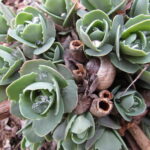 Succulent Types: Identifying with Pictures for Easy Identification
Succulent Types: Identifying with Pictures for Easy Identification- Agave americana: Also known as the century plant, this large succulent has spiky, blue-green leaves that form a rosette shape.
- Euphorbia trigona: Commonly called the African milk tree, this large succulent features three-sided stems with small leaves and thorns.
- Aeonium arboreum: With its long, branching stems and rosette-shaped clusters of leaves, this large succulent adds an architectural element to any garden.
Remember, regardless of the size of your succulents, providing proper care is essential for their health and longevity. Make sure they receive adequate sunlight, water them sparingly, and use well-draining soil to prevent root rot. With the right care, your succulents will thrive and bring joy to your space, no matter their size.
Enjoy the beauty and versatility of succulents in various sizes and arrangements
Succulents are the perfect plants for those who want to add a touch of green to their living spaces without the hassle of high maintenance. Not only are they low-maintenance and easy to care for, but they also come in a wide range of sizes, making them suitable for various types of arrangements and settings.
Small Succulents
If you have limited space or want to create a cute little succulent garden, small succulents are the way to go. These petite plants are typically less than 6 inches in height and are perfect for adorning windowsills, tabletops, or small terrariums. They are also great for creating arrangements in tiny pots or adding a touch of green to your desk at work. Some popular small succulents include Echeveria "Lola," Haworthia fasciata, and Crassula ovata "Hobbit."
Medium Succulents
Medium-sized succulents are a versatile choice that can be used as standalone plants or in larger arrangements. Ranging from 6 to 12 inches in height, these succulents make a statement without overpowering the space. They are perfect for filling up empty corners, adding texture to your garden, or creating stunning centerpieces for special occasions. Some popular medium-sized succulents include Aloe vera, Sedum adolphii "Golden Sedum," and Kalanchoe tomentosa "Panda Plant."
Tall Succulents
If you're looking to add a touch of drama to your space, tall succulents are the way to go. These majestic plants can reach heights of over 12 inches and are perfect for creating focal points in your garden or indoor spaces. Tall succulents like Agave americana, Sansevieria trifasciata "Snake Plant," and Senecio rowleyanus "String of Pearls" are sure to make a bold statement and add visual interest to any setting.
Remember, succulents come in a variety of shapes, colors, and textures, so don't be afraid to mix and match different sizes to create a visually stunning arrangement. Whether you prefer small, medium, or tall succulents, incorporating these plants into your home or garden will surely bring a touch of natural beauty and tranquility to your space.
Frequently Asked Questions
1. What are the different sizes of succulents?
Succulents come in various sizes, ranging from tiny 1-inch plants to larger ones that can grow up to a foot or more in height.
2. How do I determine the size of a succulent?
The size of a succulent is usually measured by the diameter of its rosette or the height of its stem. It is important to note that succulent sizes can vary depending on the species and maturity of the plant.
3. Are smaller succulents easier to care for?
Generally, smaller succulents require less maintenance compared to larger ones. However, each succulent has its own specific care requirements, so it is essential to research and understand the needs of the particular species you have.
4. Can I repot a small succulent into a larger pot?
Yes, you can repot a small succulent into a larger pot to provide it with more room to grow. Just ensure that the new pot has proper drainage and use well-draining soil to prevent overwatering and root rot.
If you want to read more articles similar to Comparing Sizes: A Guide to the Different Sizes of Succulents, you can visit the Identification category.


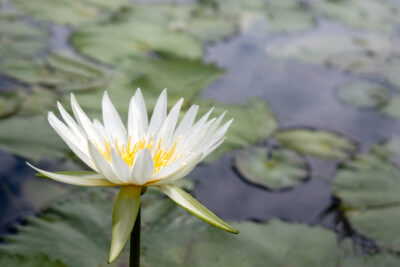
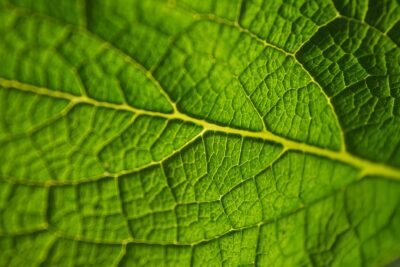
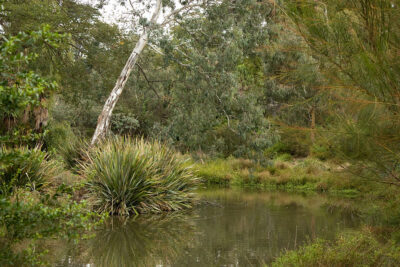

You Must Read